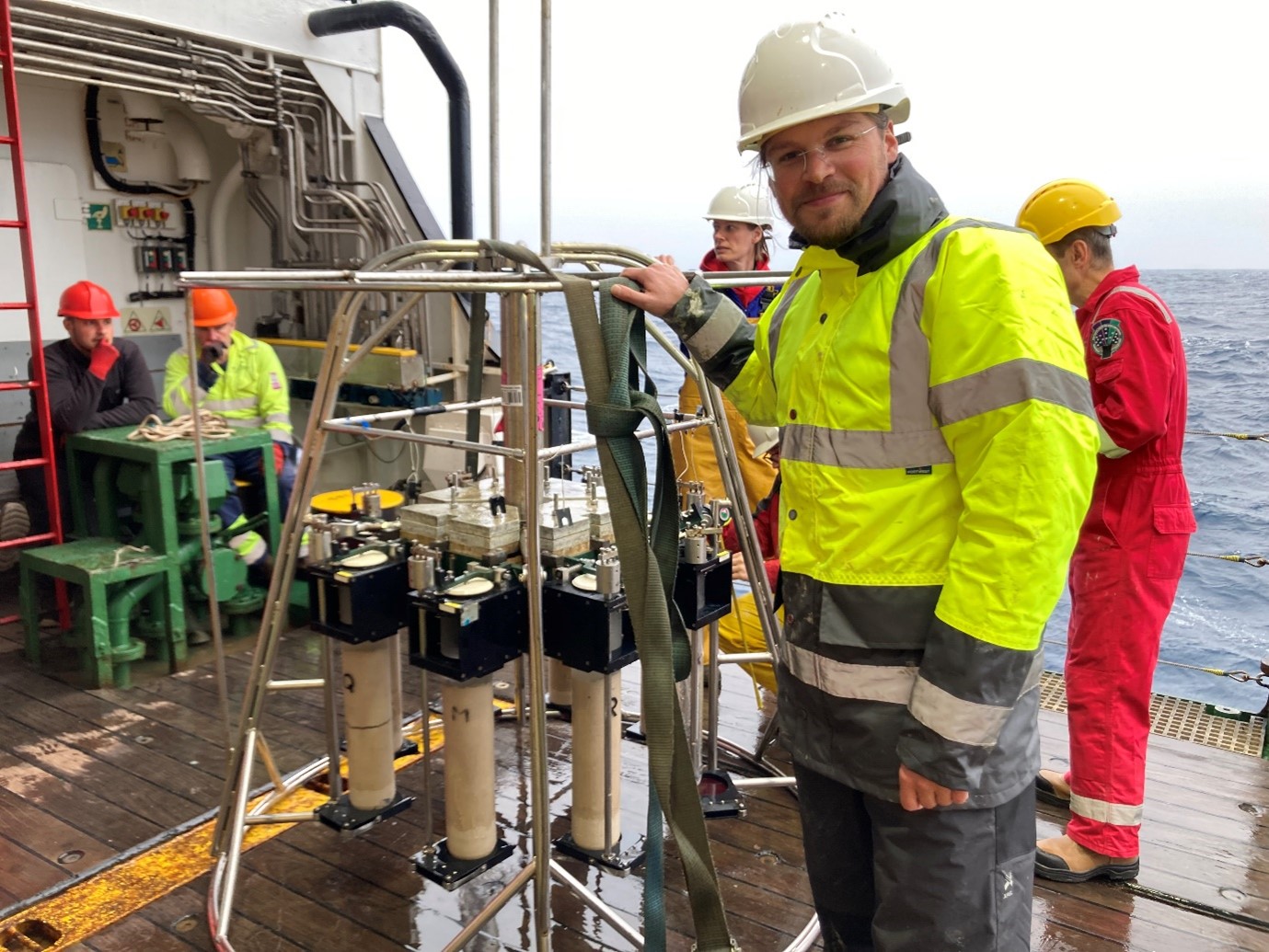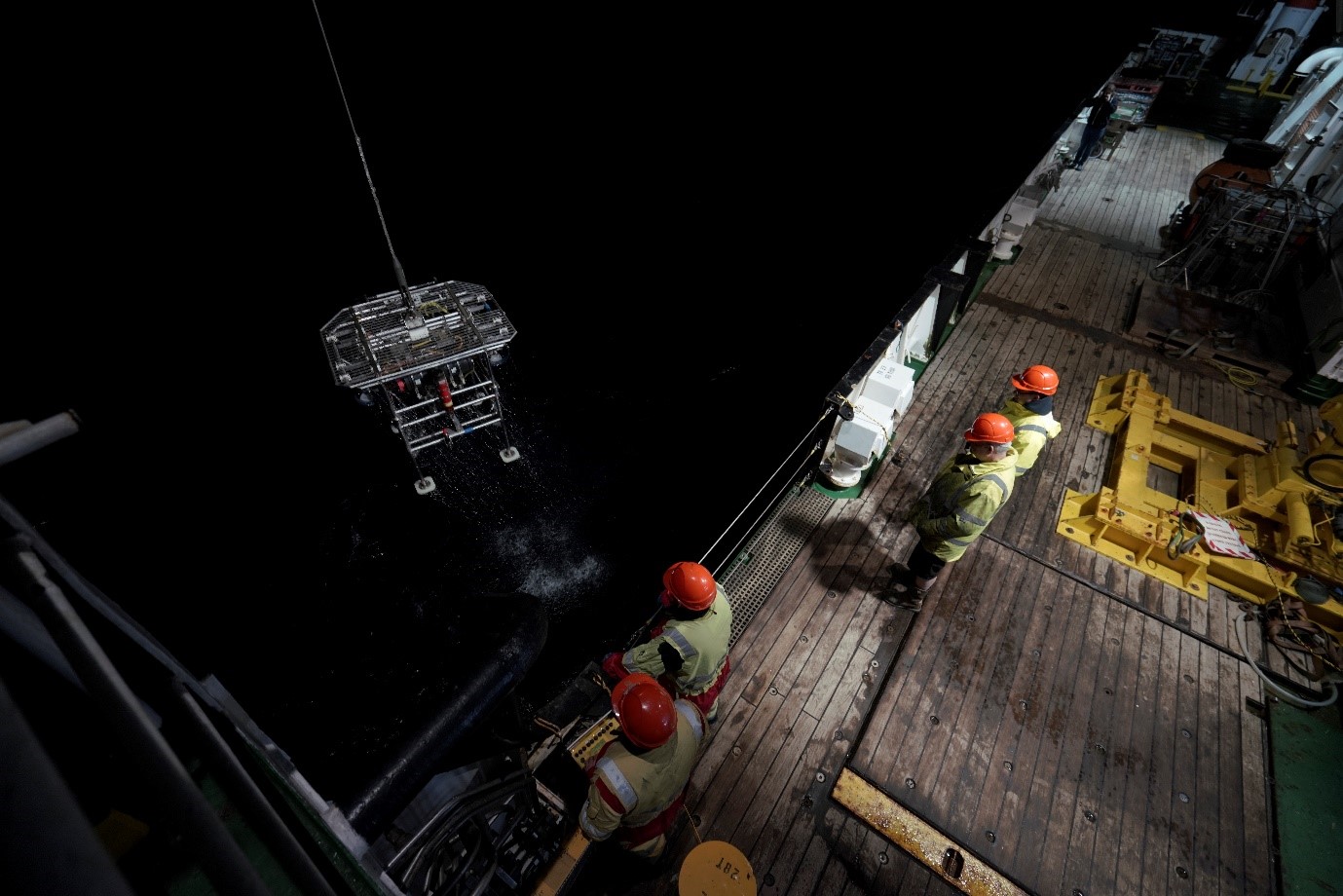JC263 to PAP-SO: Reflecting on my first deep-sea research cruise
By Petr Slavik
There probably is no better way to get your hands muddy (literally) than hopping on the RRS James Cook, destined to sample the abyssal realm of the northeast Atlantic. Jokes aside – it has been an immense privilege to be involved in the science of what is currently the longest-running multidisciplinary open ocean and abyssal observation station in the world, the Porcupine Abyssal Plain Sustained Observatory (PAP-SO).

My name is Petr Slavik and I am an early-career marine scientist who joined this year’s research cruise JC263 to PAP-SO through the academic engagement of the new AtlantiS (Atlantic Climate and Environment Strategic Science) programme [1]. While I come from the field of marine mammal science, I became fascinated by deep-sea ecosystems during my undergraduate studies, gradually finding more fascination for their complex ecology and ultimately gaining more concern for their sensitivity to climate change and other anthropogenic impacts.
This is my first deep-sea research cruise and my first-time onboard one of the NERC research ships, and I must say – what a rich experience! From day one I have had the opportunity to learn from leading scientists in benthic and pelagic ecology, interact with researchers and students of various backgrounds, expertise and passions, and ultimately have had countless opportunities to gain hands-on experience in deep-sea research. As part of the benthic team, I got to assist with benthic sediment core processing and scientific trawl sampling, as well as the process of collecting benthic imagery using the NOC’s multi-purpose remotely-operated vehicle HyBIS (Hydraulic Benthic Interactive Sampler).

The HyBIS dives have been particularly a unique experience. Having the opportunity to be involved in the live deep-seabed imagery survey is like being transferred to a different planet. Ultimately, the fact this very deep-sea habitat is not on another planet but, indeed, the planet we call home, is even more fascinating. One simply does not have to go “far” when it comes to seeing the limits of life on Earth. That being said, the deep sea and perhaps all of its extremely unique inhabitants are increasingly under the threat of climate change and other anthropogenic disturbances like deep-sea fishing, oil and gas activity that has been expanding into deeper waters, or the current dawn of a newly expanding industry focusing on mining the deep-sea mineral resources.
Climate change, in particular, presents a significant threat to deep-sea communities. This is because most benthic fauna are dependent on ocean surface ecosystems for their food supply, making them especially sensitive to future changes in ocean biogeochemistry. This is where PAP-SO comes in. Being the longest-running time-series in the abyss, the station provides key information for the assessment of long-term change in the ocean and its ecosystems. This is why visiting PAP has been such an amply exciting and inspiring opportunity for me. An opportunity I am very grateful for.

Above all, apart from the core science, I learnt how much scientific coordination, collaboration and ultimately hard work is needed to execute a successful research cruise (and we are not even talking about the challenges associated with the rapidly changing weather and sea state above the deep abyssal plains like the Porcupine Abyssal Plain). Hats off to all the crew and scientists onboard the RRS James Cook for their talent and immense sense of detail. In the end, a successful research cruise involves more than scientific effort and expertise – it involves determination from everyone on the ship – from the amazing cooks and deck crew to the genius ship’s engineers and technicians. I can only stand in awe and be thankful to everyone onboard, as there is no doubt I have felt safe (and well-fed, indeed) throughout the whole cruise.
It has been a huge pleasure to sail with everyone onboard the RRS James Cook and I look forward to future opportunities in the field.

Links: